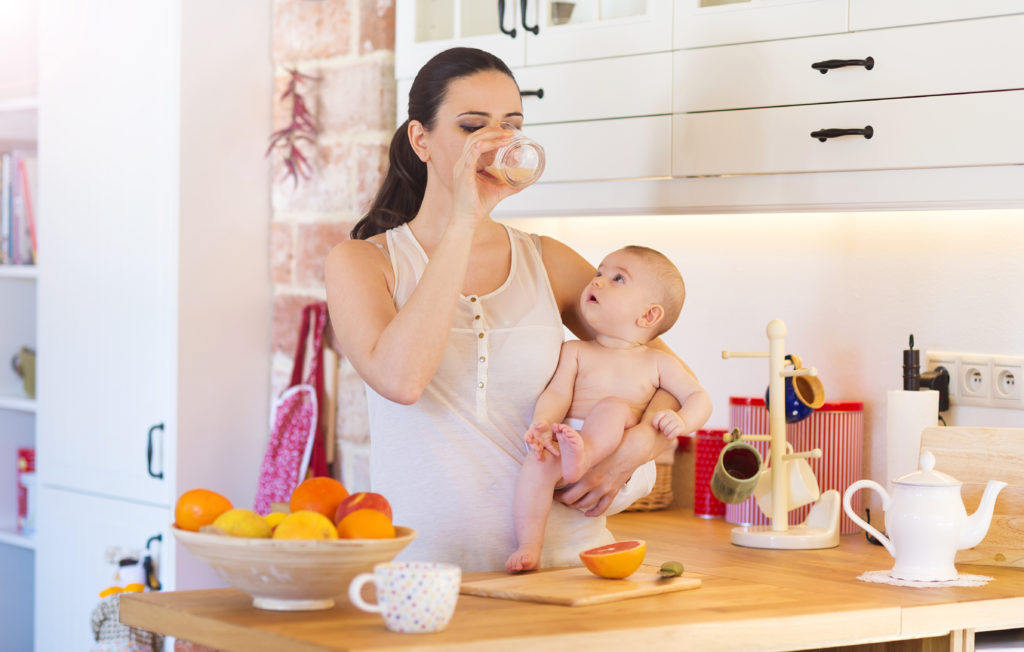Spoons Up! Time to Introduce Solids

baby girl eating red dragon fruit
Your baby is growing up so fast, and you aren’t entirely sure where the last few months have gone. All of a sudden the days of constant nursing and unending bottles seem to have settled into a pattern. Feeding is no longer something to worry or stress over.
Which means it’s time to start solids!
It can definitely seem like things change just as soon as you get comfortable with the stage your baby is in. But solid food does not need to be a source of stress or frustration. Solid food, especially in the beginning, is really about taste, texture, and exploration rather than meeting nutritional needs. Breastmilk and/or infant formula will still be the main sources of your infant’s nutritional needs.
When Is It Time?
The recommendations for when to begin solids change regularly. They tend to swing back and forth between “note before 6 months” and “between 4 and 6 months”. There are many reasons for this, and both sides have valid evidence to back their recommendation. What everyone does agree on is that age is almost secondary to baby readiness.
The signs of readiness include:
- Baby is interested in food and watches you eat or grabs for food

- Baby is beginning to develop a pincer grasp (finger and thumb). This does not need to be fully developed.
- Good neck and trunk control. While some recommendations state that infants should be able to sit completely independently, others state that a baby with good head/neck control who needs a stabilizing factor (Bumbo, high chair, etc) to stay sitting is fine to begin solid foods.
- Baby has lost the tongue-thrust reflex. To test this, place the tip of a baby spoon on your baby’s lower lip, if your baby thrusts the spoon away, they are not ready to begin solid foods.
- Some sources recommend ensuring that your baby has doubled their birth weight, but this is not a consistent recommendation across medical bodies.
How Do I Start?
Are you wondering where, and how, to start? That’s a normal response. After all, if there is one universal truth about parenting it is that everyone around you is going to share their opinion on how you should be doing things!
There are two general approaches to introducing solids to babies. The first is what many of us associate with “starting solids” and baby food – purees. This includes baby cereal, squeeze pouches, or any thoroughly mashed or pureed foods.
The second approach is called Baby-Led Weaning (BLW) and it consists of giving your baby appropriately sized and cooked pieces of food and letting them gnaw on the food with their gums. This is usually either cut into small, non-choking pieces like small bites of banana, or pinky finger-sized pieces, like a cooked vegetable or slice of meat.
There is nothing inherently right or wrong about either of these approaches. Some babies will have a distinct preference for one type of food, or one way may not work for a family. It is important to remember that food should be fun, an exploration, and a chance to be curious rather than stressful. So pick the method that works best for you!
Because food is an adventure at this point, you can experiment to see what your baby seems to like.
What Foods Do I Start With?
In the past, recommendations around the introduction of foods was been incredibly detailed and strict. Cereals, one grain at a time, followed by vegetables (in a very specific order of introduction based on colour), then meat, then fruit. Although it was believed to “train” babies to eat a wide variety of foods and to avoid allergens, the recommendations did not hold up to scrutiny over the years.
Now, the primary source of concern is that by 6 months of age, an infant’s iron stores have been depleted, as is the iron store in breastmilk. For that reason, the recommendation for many years was to begin with iron-rich foods.
If you are beginning with purees, iron-rich foods can include pureed meats, fish, tofu, and lentils, or iron-fortified infant cereal. For those doing BLW, try finger-sized pieces of meat, flakes of fish, or eggs.
Getting Started
Once you and your baby have figured out how to start solid foods, you can think beyond that first food. Like many feeding recommendations, how quickly and often to introduce new foods is a debate with recommendations that change frequently.
In the BWL community, it is often encouraged to simply ‘feed baby appropriate sized pieces of what you are eating’. This could mean that in a single meal, baby tries roast chicken, steamed carrots, and mashed potatoes. In the past, the recommendation has been to introduce one food at a time, for a period of multiple consecutive days, in order to isolate allergic reactions.
For most families, that kind of slow introduction is not sustainable. Recent research has also shown that delaying the introduction of certain foods, especially high allergen foods like eggs, shellfish, and nuts, can be detrimental.
In 2019, the Canadian Paediatric Society released new guidelines calling for the introduction of high-allergen foods between 4 and 7 months of age. Research has now shown that early introduction can prevent allergies, while restricting the infant from those foods may actually contribute to the development of allergies.
It is important to note that this is a general recommendation and does not take into account your baby’s personal or family medical history. That is why it is always important to talk to your child’s doctor before beginning solids.
Introducing solids should be a time of fun, not stress. If even the idea of this next stage has you nervous, reach out to us. We have Certified Infant Feeding Specialists on our team who are ready to help you develop a comprehensive feeding and solids introduction plan that will have you feeling excited for this next adventure.
